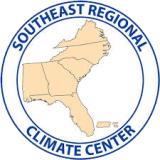Southeast Climate Monthly Webinar: July 26, 2022
Temperatures and precipitation were highly variable across the region this past month. Precipitation was generally wetter across the region, which helped alleviate some of the drought conditions. However, there was still much variation in precipitation, which is typical of July. Streamflows are near normal across most of the region.
Looking ahead: The three-month Southeast outlooks depict that the region will likely be warmer than normal and is leaning to be wetter than normal throughout most of the region with some exceptions. Expect streamflows to continue mostly in the below-normal to normal range for much of the Southeast through late summer and early autumn. The Atlantic Hurricane Season has begun–stay prepared! Check out this month’s special presentation, “Harmful Algal Blooms in the Southeast,” to learn about how North Carolina monitors bloom events and linkages with climate conditions.
About This Webinar
The Southeast Climate monthly webinar series is hosted by the Southeast Regional Climate Center, the National Integrated Drought Information System (NIDIS), and the NOAA National Weather Service. These webinars provide the region with timely information on current and developing climate conditions such as drought, floods, and tropical storms, as well as climatic events like El Niño and La Niña. Speakers may also discuss the impacts of these conditions on topics such as agriculture production, water resources, wildfires, and ecosystems.





